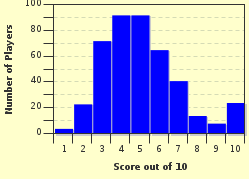Quiz Answer Key and Fun Facts
1. He may not have been the most mobile villain around, but even with just one leg he could certainly hop to it when bad deeds needed to be done. Which literary baddie had a pet of the psittacine variety?
2. She liked fur coats and hot things and had a strange hair style. She also disliked animals, particularly those of the canine variety. There were at least 101 reasons to hate this character. What was her name?
3. Filial fondness was perhaps his weakness; and some found his affection for his twin sister a little bit too creepy. Which villain tried to cheer himself up by having his sister executed, but ended up driven insane with guilt?
4. He claimed to be a count, and certainly craved social recognition, but which villain was also intent on hijacking nuclear missiles - regardless of the efforts of a man On Her Majesty's Secret Service?
5. He was the smiling face of Wall Street and enjoyed fine food and musical culture. But which financial whiz-kid had a darker side that included murder, rape and dismemberment?
6. High birth meant nothing when you were born on 'the wrong side of the blanket'. Enraged by feelings of injustice at his illegitimate birth, which villain framed his brother and ordered the execution of a king?
7. She was "a blonde to make a bishop kick a hole in a stained glass window" and left a bloody trail of victims in her wake. Which femme fatale had a secret past she tried to hide from a world-weary private eye?
8. He had a pious exterior and cloaked in clerical dress unsavoury urges. Which baddie succumbed to his lust for a temptress, and, after, followed a path that led to damnation?
9. He was careworn and cynical, yet also intelligent and sympathetic. When some people had no option but to spend too much time in front of the TV screen, which villain had the ability, if he wanted to use it, to spare their pain?
10. He was the ultimate evil-doer. By specific name, or just by stereotype, he was known throughout history for hundreds of years. In one of his most famous literary outings, he was, some believed, actually God. Which villain had his own ideas of paradise, if only it could be found?
Source: Author
darksplash
This quiz was reviewed by FunTrivia editor
agony before going online.
Any errors found in FunTrivia content are routinely corrected through our feedback system.

